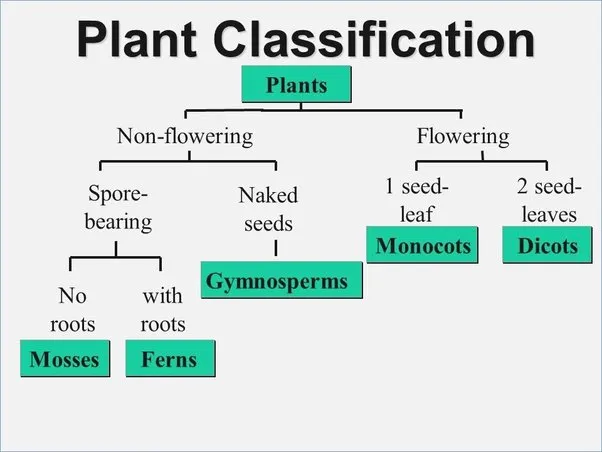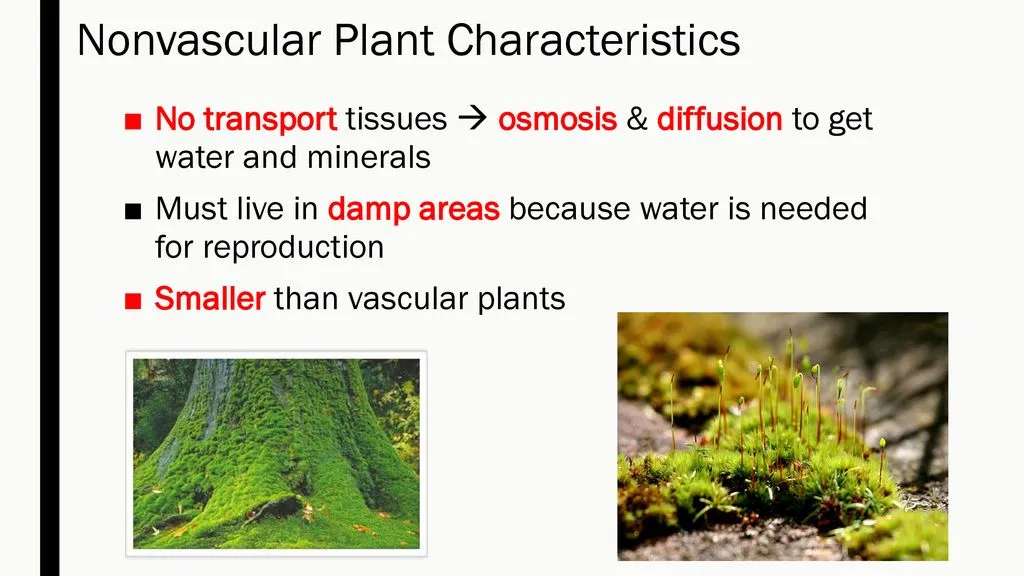Ever wondered just how many plant are there? Get the answer, plus fun facts and insights into the amazing world of plant life.
Plant
Photosynthetic eukaryotes in the kingdom Plantae
| Number of Species | Approximately 380,000 known species |
| Role in Ecosystem | Green plants provide a significant amount of the world’s molecular oxygen |
| Human Uses | Plants are used for food, building materials, ornaments, writing materials, and medicines |
Introduction: How Many Plants Are There?
Plants. They’re everywhere! From the tiny moss clinging to a forest rock to the towering redwood trees of California, plants make up a vast and incredibly diverse part of our world. But have you ever stopped to think about just how many different types of plants actually exist? Let’s dive in and explore the fascinating world of plant biodiversity.
Understanding Plant Diversity
The Scale of Plant Life
The world of plants is vast and varied, encompassing an estimated 391,000 species of vascular plants, of which about 369,000 are flowering plants. This diversity spans across different habitats, from the deepest oceans to the highest mountains, each species uniquely adapted to its environment.
The Classification of Plants
The Kingdom Plantae
At the heart of plant diversity is the Kingdom Plantae, a group that includes all living and extinct plants. This kingdom is divided into several categories, each representing a unique evolutionary path:
- Algae: The base of the plant kingdom, including both green algae (Chlorophyta and Charophyta) and other types.
- Bryophytes: Non-vascular plants like mosses, liverworts, and hornworts.
- Pteridophytes: Vascular, non-seed plants such as ferns and horsetails.
- Gymnosperms: Seed-producing plants like conifers and cycads that do not form flowers.
- Angiosperms: Flowering plants, the largest and most diverse group within the plant kingdom.
The Role of Plants in Ecosystems
Plants are not just passive inhabitants of the planet; they are active engineers of their environment. They produce oxygen through photosynthesis, form the base of food chains, and create habitats for countless species. Moreover, plants regulate the climate, cycle nutrients, and protect watersheds, showcasing their indispensable role in maintaining ecological balance.
The Threats to Plant Diversity
Despite their importance, plant diversity faces significant threats. Habitat destruction, climate change, pollution, and invasive species are just a few of the challenges plants must contend with. The alarming rate of plant extinction underscores the urgency of conservation efforts to protect these vital organisms.
Flowering Power
Of all the plant species, a whopping 94% are flowering plants (also known as angiosperms). This group includes everything from vibrant orchids to the humble grasses in your lawn. Flowering plants have truly taken over the world!
Why Does Plant Diversity Matter?
Plants aren’t just pretty to look at (although many certainly are!). They play a vital role in our ecosystems and for us humans, including:
- Oxygen production: Plants are the lungs of our planet, producing the oxygen we breathe.
- Food: We rely on plants for fruits, vegetables, grains, and countless other foods.
- Medicine: Many important medicines are derived from plants.
- Climate regulation: Plants help absorb carbon dioxide and regulate temperatures.
- Habitat: Plants provide homes and shelter for countless animal specie
Plants Under Threat
Sadly, the report from the Royal Botanic Gardens, Kew, titled “State of the World’s Plants”, tells us that about 21% of all plant species are currently threatened with extinction. That’s a sobering number. The biggest threats to plant life include:
- Habitat loss: Deforestation, urbanization, and agriculture destroy plant habitats.
- Climate change: Changing weather patterns and temperatures disrupt plant life cycles.
- Invasive species: Non-native plants can outcompete and displace native species.
What Can We Do to Protect Plants?
We can all play a part in protecting the amazing diversity of plants. Here’s how:
- Support conservation organizations: Groups like The Nature Conservancy and local plant societies work tirelessly to protect plant habitats.
- Grow native plants: Choose plants native to your region for landscaping to help local ecosystems thrive.
- Reduce, reuse, recycle: Lowering our consumption helps reduce our impact on forests and other natural areas.
- Spread the word: Share your newfound love of plants and why they matter with friends and family!
Fun Plant Facts
Ready to have your mind blown by some awesome plant facts? Here we go!
- Old-timers: Some individual trees, like the bristlecone pines in California, can live for thousands of years!
- Underground networks: Many plants communicate and share resources through vast fungal networks beneath the soil.
- Insect tricksters: Certain orchids mimic the shape and scent of female insects to attract male pollinators.
- Explosive seed dispersal: Some plants have pods that literally explode to spread their seeds far and wide.
What are the different types of plants?

Plants, the essential backbone of all terrestrial ecosystems, are classified into various types based on their distinct characteristics and evolutionary history. Understanding the different types of plants not only enriches our knowledge of plant diversity but also highlights the complexity of the plant kingdom. Here, we explore the major classifications and types of plants, providing insights into their unique features and roles within ecosystems.
Major Classifications of Plants
1. Nonvascular and Vascular Plants
Plants are primarily divided into nonvascular and vascular plants. Nonvascular plants, also known as bryophytes, lack a well-developed system for transporting water and nutrients. Examples include mosses, liverworts, and hornworts. Vascular plants, on the other hand, have a complex vascular system that includes xylem and phloem, allowing them to transport fluids and nutrients efficiently across different parts of the plant. This group is further divided into seedless and seed plants.
2. Seedless Vascular Plants
Seedless vascular plants reproduce via spores and do not produce seeds. This group includes ferns, clubmosses, and horsetails. Ferns are particularly notable for their large fronds and can thrive in moist, shaded environments.
3. Seed Plants: Gymnosperms and Angiosperms
Gymnosperms
Gymnosperms are seed plants that produce seeds without a protective enclosure. They are often evergreen, with seeds typically borne on cones. Common examples include conifers like pines, firs, and spruces. Gymnosperms are adapted to a wide range of climates and play crucial roles in many ecosystems.
Angiosperms
Angiosperms, or flowering plants, are the most diverse group of plants with over 260,000 species. They produce seeds enclosed within a fruit, which is a significant evolutionary advancement that aids in seed dispersal. Angiosperms are divided into two groups based on the number of seed leaves (cotyledons) in the plant embryo: monocots and dicots. Monocots, such as grasses and lilies, have one cotyledon, while dicots, like roses and sunflowers, have two.
What are the characteristics of non-vascular plants?

Non-vascular plants, also known as bryophytes, are a group of plants that lack a vascular system, which includes xylem and phloem. These plants are characterized by several distinct features that differentiate them from vascular plants. Here are the key characteristics of non-vascular plants:
- Absence of Vascular Tissue: Non-vascular plants do not have the vascular tissues xylem and phloem, which in vascular plants help transport water, nutrients, and food across different parts of the plant.
- Size and Structure: Due to the absence of vascular tissues, non-vascular plants are generally small and low to the ground. They lack true roots, stems, and leaves. Instead, they have structures that perform similar functions: rhizoids (root-like), thalli (leaf-like), and simple stems.
- Habitat: Non-vascular plants typically thrive in moist and shaded environments where they can absorb water and nutrients directly through their surfaces. They are commonly found in damp forests, bogs, and swamps.
- Reproduction: These plants reproduce through spores rather than seeds and do not produce flowers or fruits. The life cycle of non-vascular plants features a dominant gametophyte stage, where the main plant body is haploid. This contrasts with vascular plants, where the sporophyte stage is dominant.
- Water and Nutrient Absorption: Non-vascular plants absorb water and nutrients directly through their cell surfaces because they lack the specialized structures found in vascular plants. This limits their size and the environments in which they can live.
- Symbiotic Relationships: Many non-vascular plants form symbiotic relationships with fungi, which help them absorb nutrients from the environment, particularly in nutrient-poor soils.
- Ecological Role: Despite their simple structure, non-vascular plants play crucial roles in their ecosystems. They help stabilize soil and are often among the first organisms to colonize bare or disturbed earth, acting as pioneer species.
These characteristics define non-vascular plants as a fundamental group within the plant kingdom, adapted to specific ecological niches and playing essential roles in many terrestrial ecosystems.
What are the threats to plant diversity?
The threats to plant diversity are numerous and vary in their impact across different regions and ecosystems. Based on the provided sources, the major threats to plant diversity include:
- Habitat Loss: The most significant threat to plant biodiversity is habitat loss, primarily due to human activities such as deforestation, urbanization, and conversion of land for agriculture and industrial use. This leads to the fragmentation and degradation of habitats, making it difficult for many plant species to survive.
- Climate Change: Climate change poses a critical threat to plant diversity. Changes in temperature and precipitation patterns, more frequent and severe weather events, and shifting climate zones can all alter plant distribution and survival. Species that cannot adapt quickly enough or migrate to suitable habitats may face increased risk of extinction.
- Invasive Species: The introduction of non-native species to new environments can lead to significant ecological imbalances. Invasive species often compete with native plants for resources, sometimes displacing them entirely. This not only affects plant diversity but also the wider ecosystem dependent on the original plant species.
- Pollution: Pollution, including air, water, and soil contamination, can have detrimental effects on plant health and biodiversity. Toxic substances can alter plant growth and reproductive patterns, reduce plant diversity, and subsequently affect the entire food chain.
- Overexploitation: The overharvesting of certain plant species for commercial, medicinal, and other uses can lead to significant declines in those populations. Without sustainable management practices, such exploitation can lead to extinction or severe genetic erosion in wild plant populations.
- Disease and Pests: Plants are increasingly threatened by diseases and pests, which can be exacerbated by global trade and climate change. Pathogens and insect pests can decimate plant populations, particularly when those plants lack natural resistance to newly introduced threats.
These threats collectively contribute to the loss of plant diversity, which is crucial for ecosystem stability, human well-being, and the overall health of our planet. Addressing these threats requires a concerted effort involving conservation, sustainable practices, and global cooperation.
Conclusion:
The world of plants is a testament to the incredible diversity of life on Earth. From the smallest algae to the tallest trees, plants play a crucial role in sustaining life as we know it. However, this diversity is under threat, and it is our responsibility to protect it. By understanding the importance of plants and the challenges they face, we can take steps to ensure that the green world continues to thrive for generations to come.
